Kritsa is an exceptionally lovely and picturesque village on the slopes of a hill located west of Mirambelo Bay and the city of Agios Nikolaos. Nowadays, it is a well-known tourist destination, not only as a place where one can walk and enjoy in charming streets and visit numerous churches, but also where visitors can buy handicraft. This last aspect is made “immortal” in one of the sculptures that can be seen here.
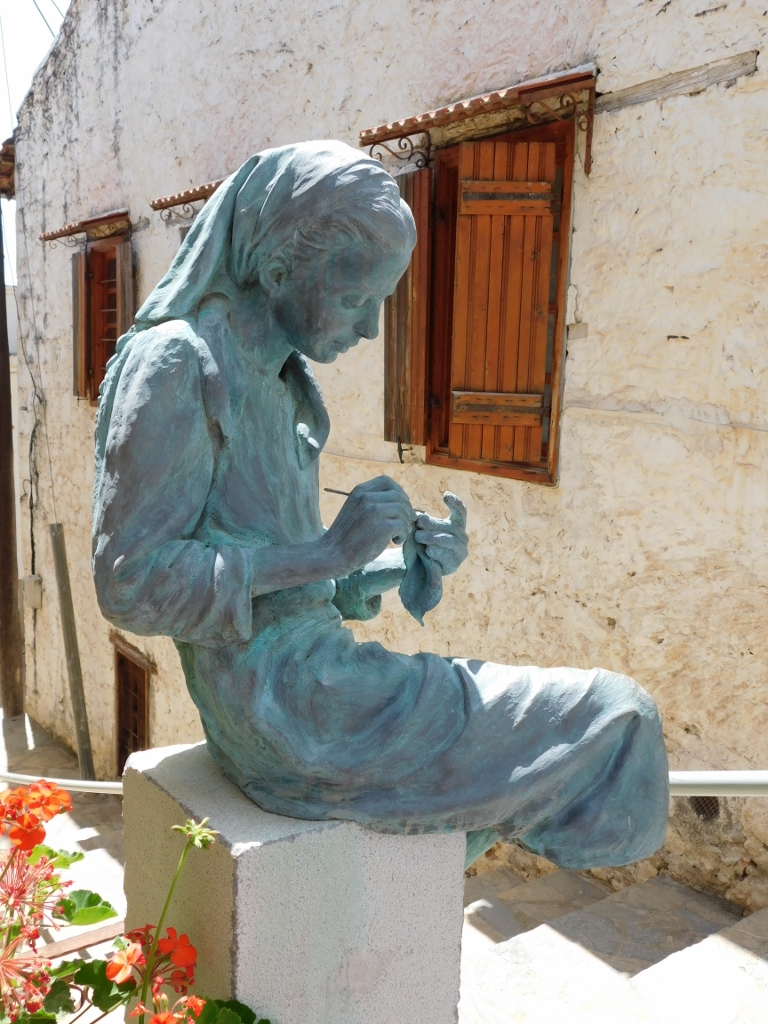 Kritsa, a detail
Kritsa, a detail
For me, the walk around the village was the best, so I headed towards one of the bigger and relatively distant churches. This allowed me to enjoy a little longer in the pictorial streets and details.
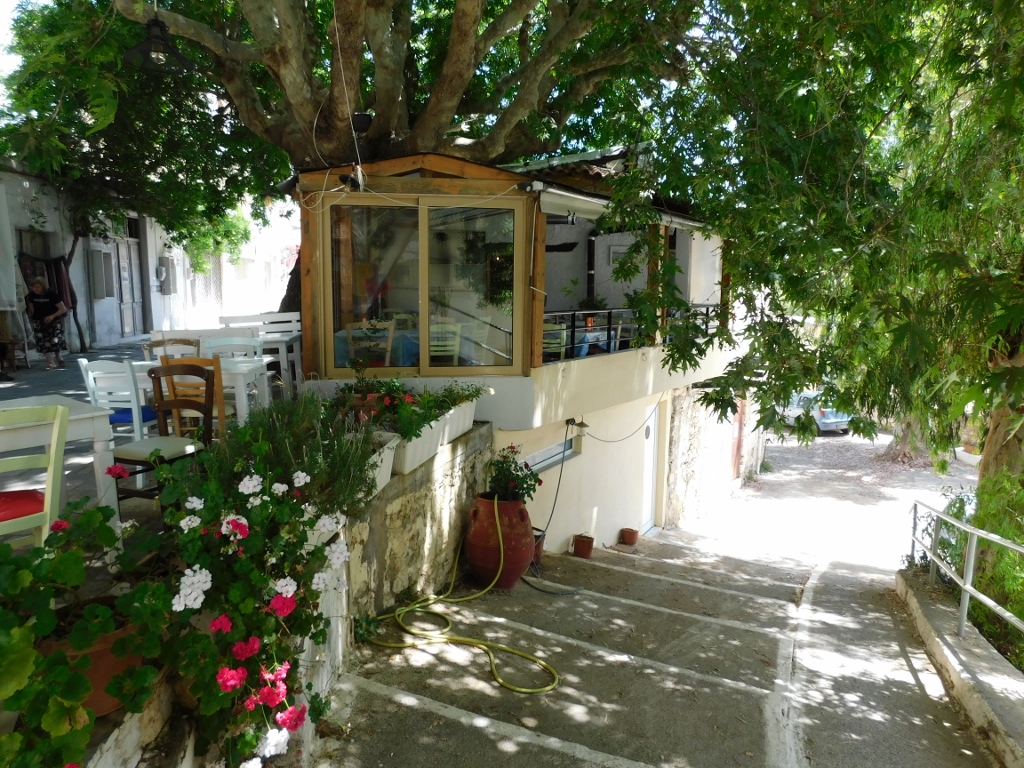 Kritsa, a detail
Kritsa, a detail
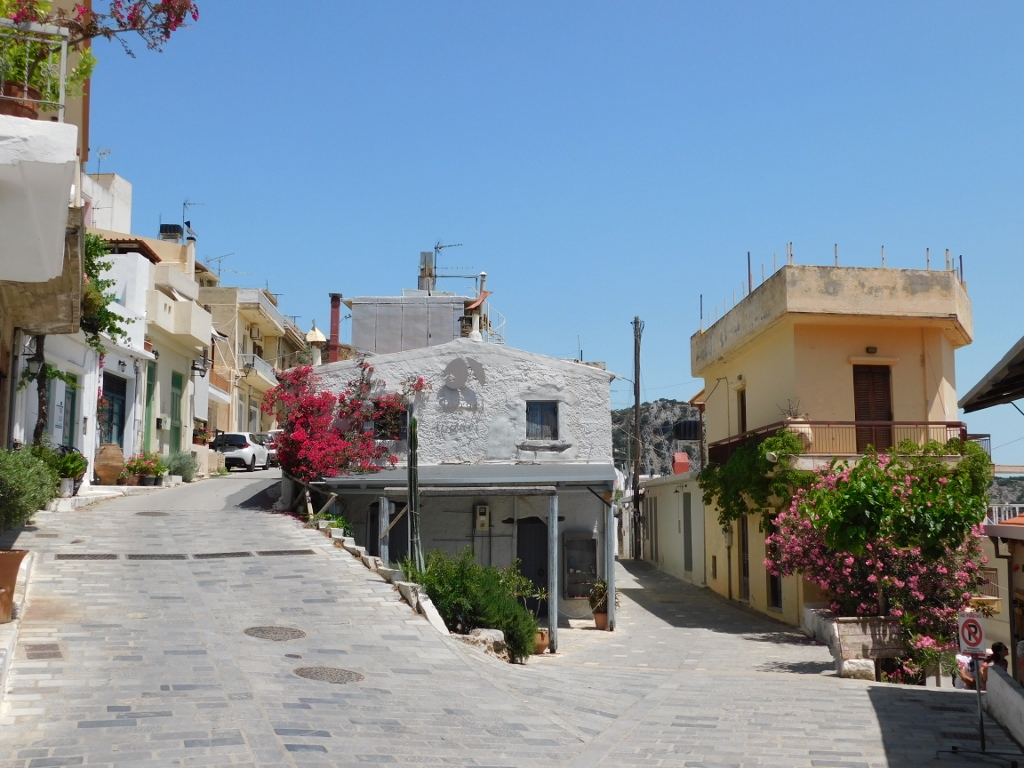 Kritsa, a detail
Kritsa, a detail
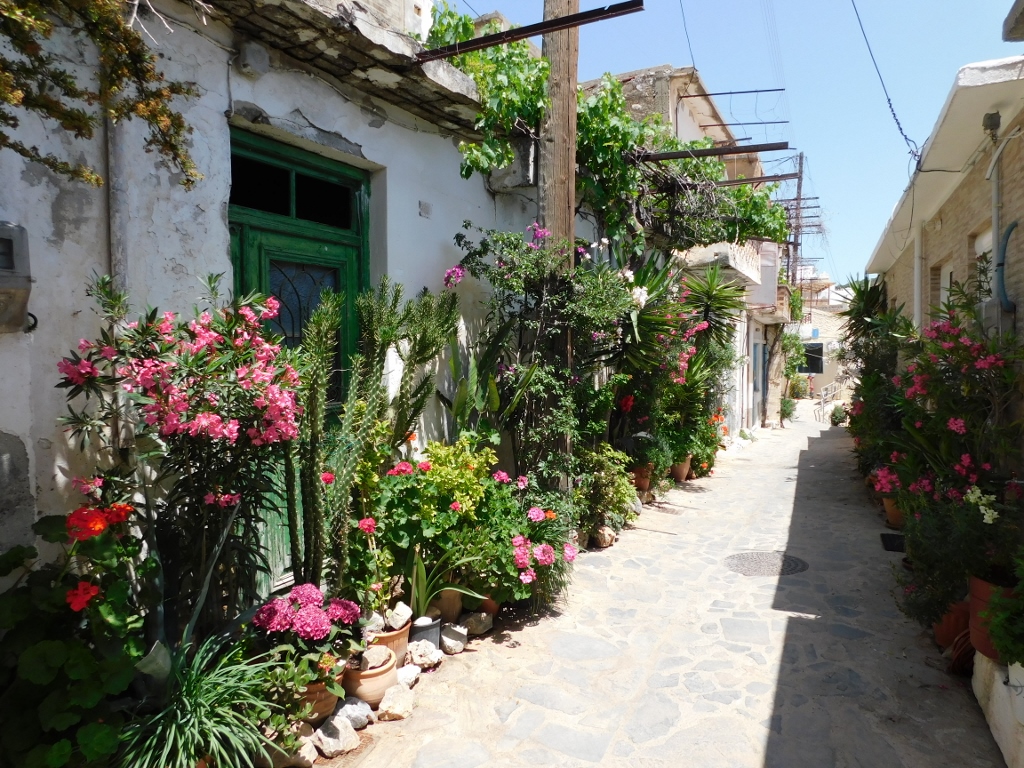 Kritsa, a detail
Kritsa, a detail
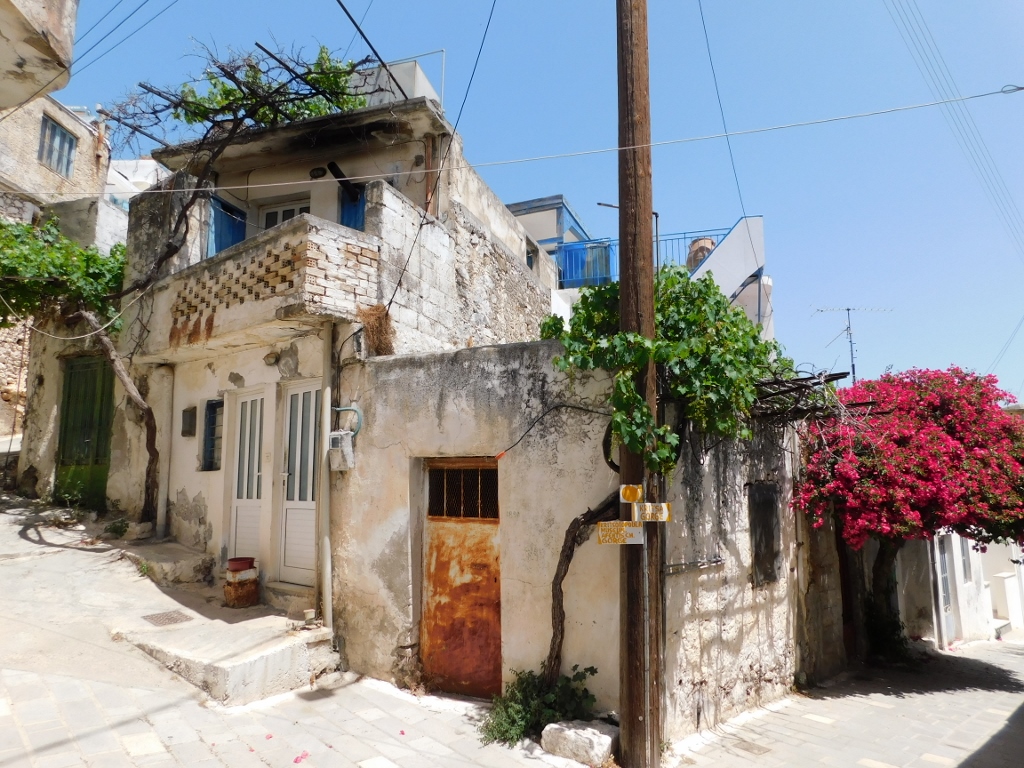 Kritsa, a detail
Kritsa, a detail
And so I came to the Church of St. George, but it was closed. This did not bother me and I could still enjoy the splendid view seen from the terrace around the church.
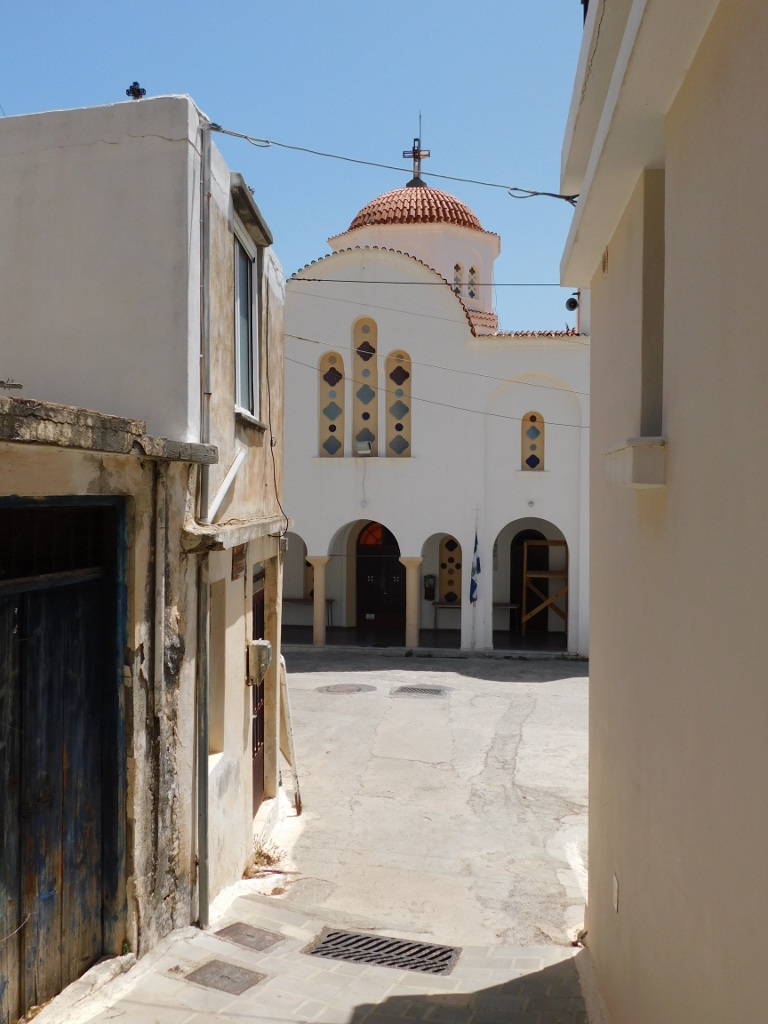 Kritsa, Church of St. George
Kritsa, Church of St. George
 Kritsa, view from the plateau around the Church of St. George
Kritsa, view from the plateau around the Church of St. George
The plateau also renders a fine view at Kritsa itself or to be more accurate at its central segments.
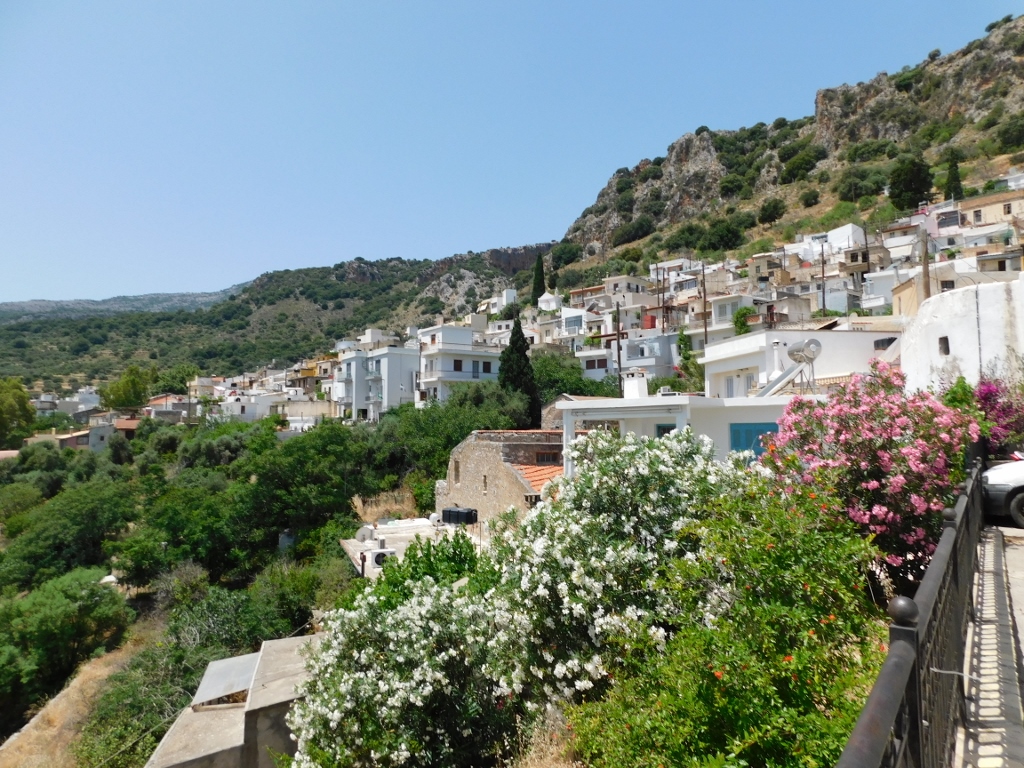 Kritsa
Kritsa
The return walk towards the centre of Kritsa followed a different, but by no means less scenic route.
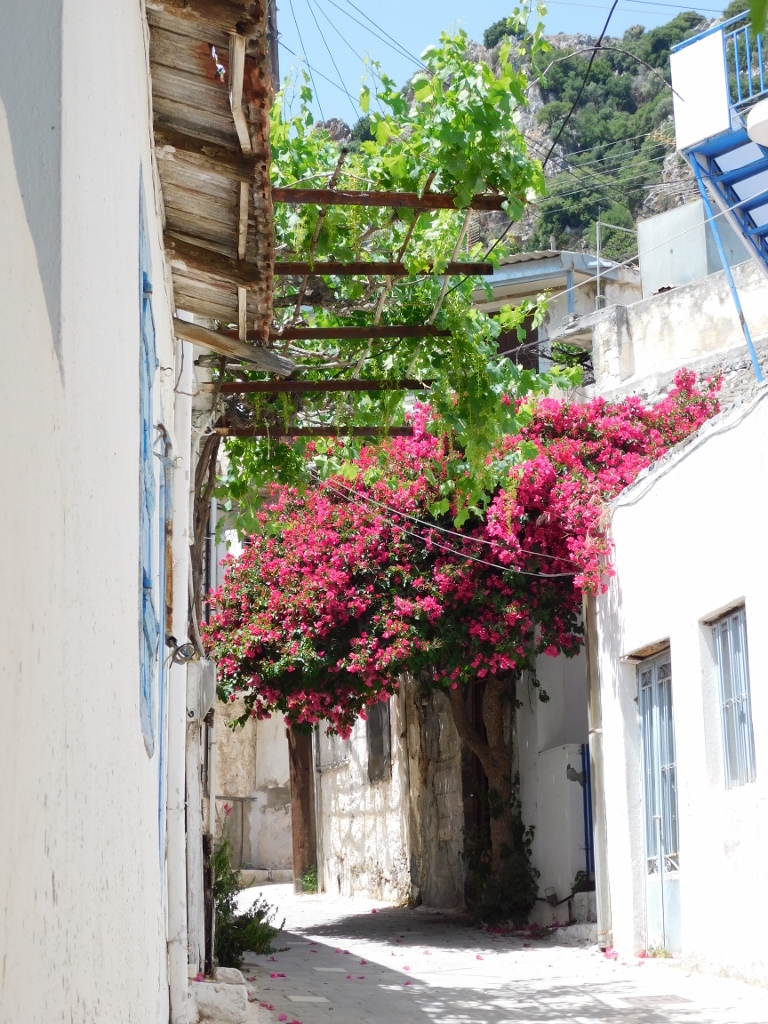 Kritsa, a detail
Kritsa, a detail
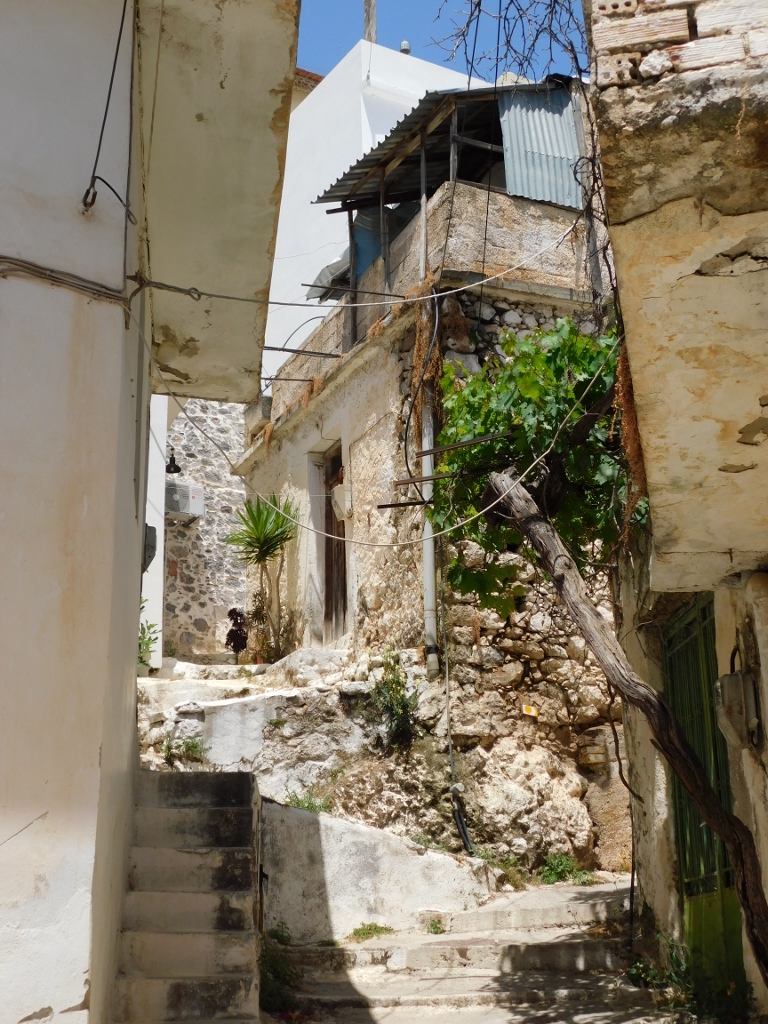 Kritsa, a detail
Kritsa, a detail
Soon I could take a seat in a deep shade where I refreshed a little, since it had become quite hot. It was already the end of May and thus the temperature kept going up from one day to the next.
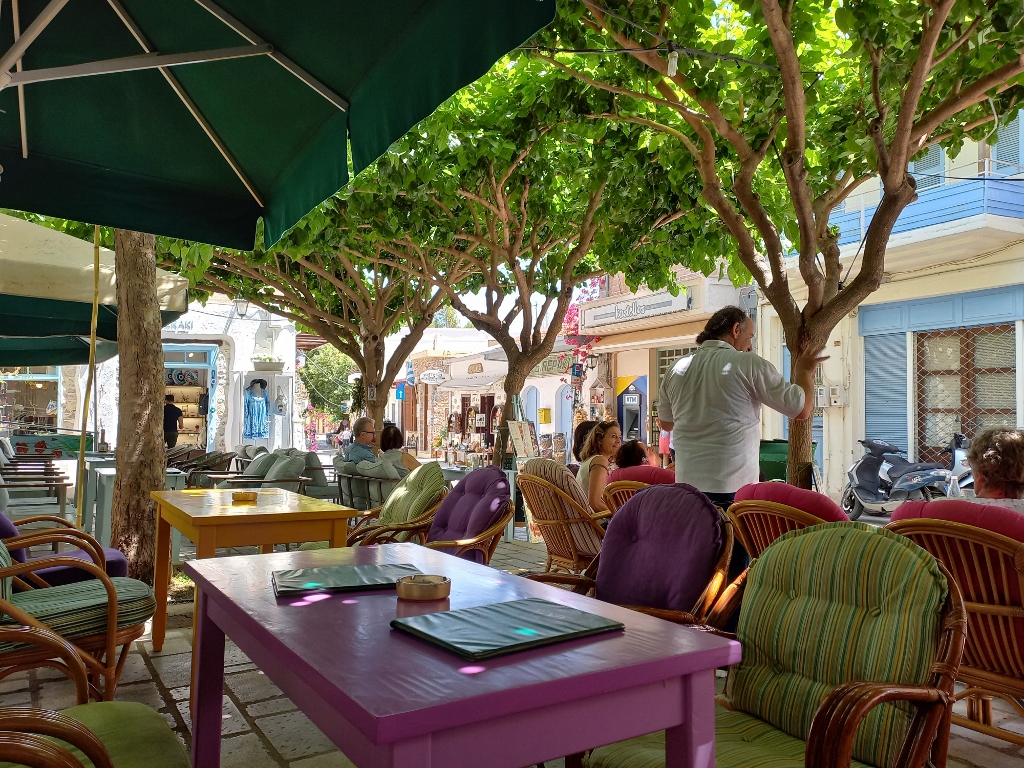 Kritsa, a detail
Kritsa, a detail
After the very nice rest in Kritsa, I got back into the car and headed for my final destination of the day which was the town of Malia on the north coast of Crete, some 40 km away from Kritsa.
Here is again the map that shows all the places I visited during this journey:
Before I could see the sea, at some point within Selinari Canyon where the road passes, I noticed a monastery on the left-hand side and luckily there were not many cars on the road and I could quite safely slow down and park on the side. Not knowing anything about this place, I felt a desire to visit it. After all, it was on my way. Afterwards I found out that the Cretans consider it a bad omen if a traveller passes through the canyon without stopping at the monastery. Wow! I just dodged a bullet!
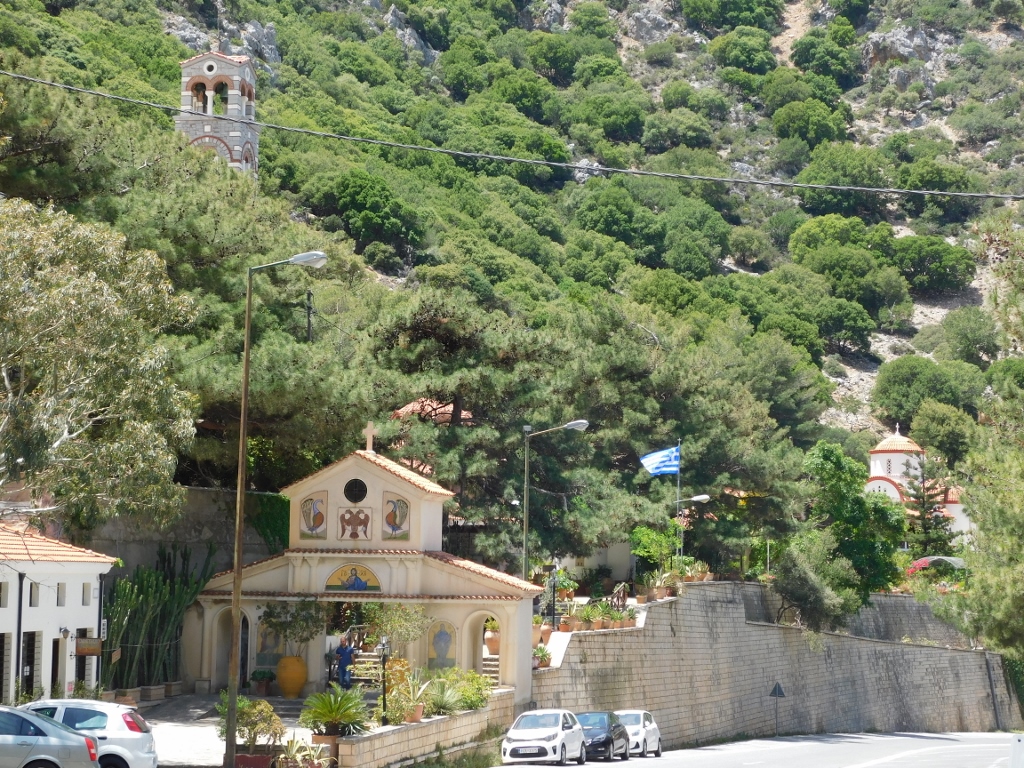 Monastery by the road
Monastery by the road
This is Selinari Monastery or to be more accurate the Monastery of St. George Selinari.
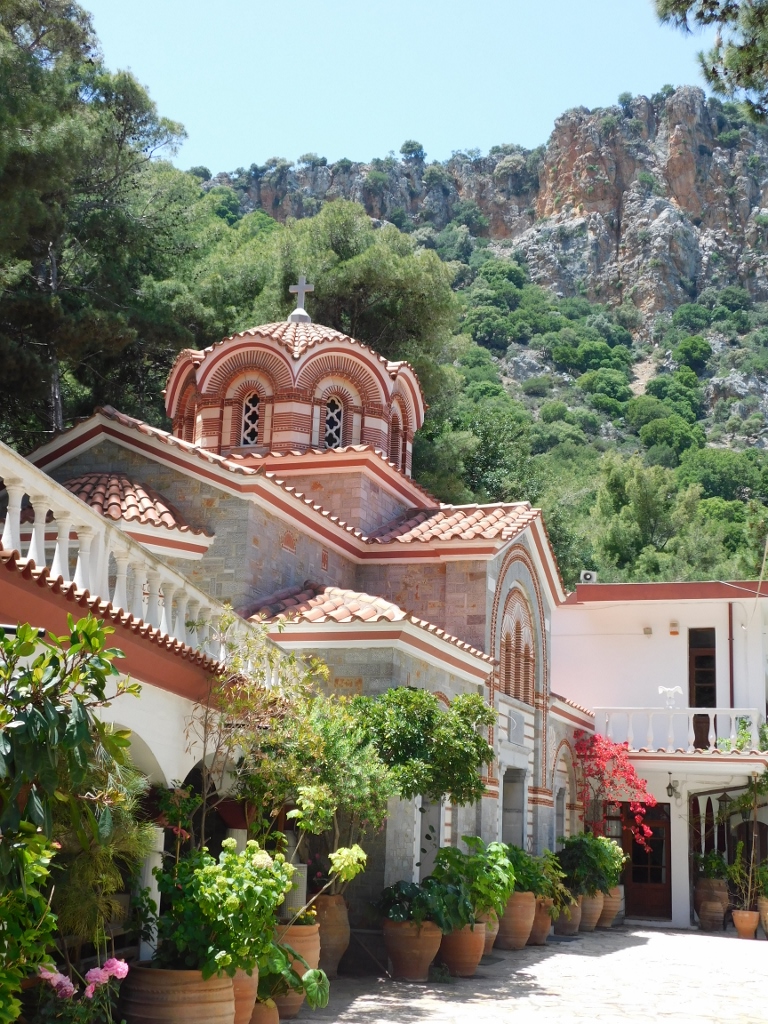 Monastery of St. George Selinari
Monastery of St. George Selinari
Although some comparatively modern structures built in the 20th century can be seen at the monastery nowadays, it actually has a very long tradition.
It was founded in the period from 961 to 1204 CE, but it was burned down by pirates in 1538. According to the tradition, a monk from the island of Rhodes, named Nikolaos, led by God found an icon of St. George here and subsequently built a church on the site.
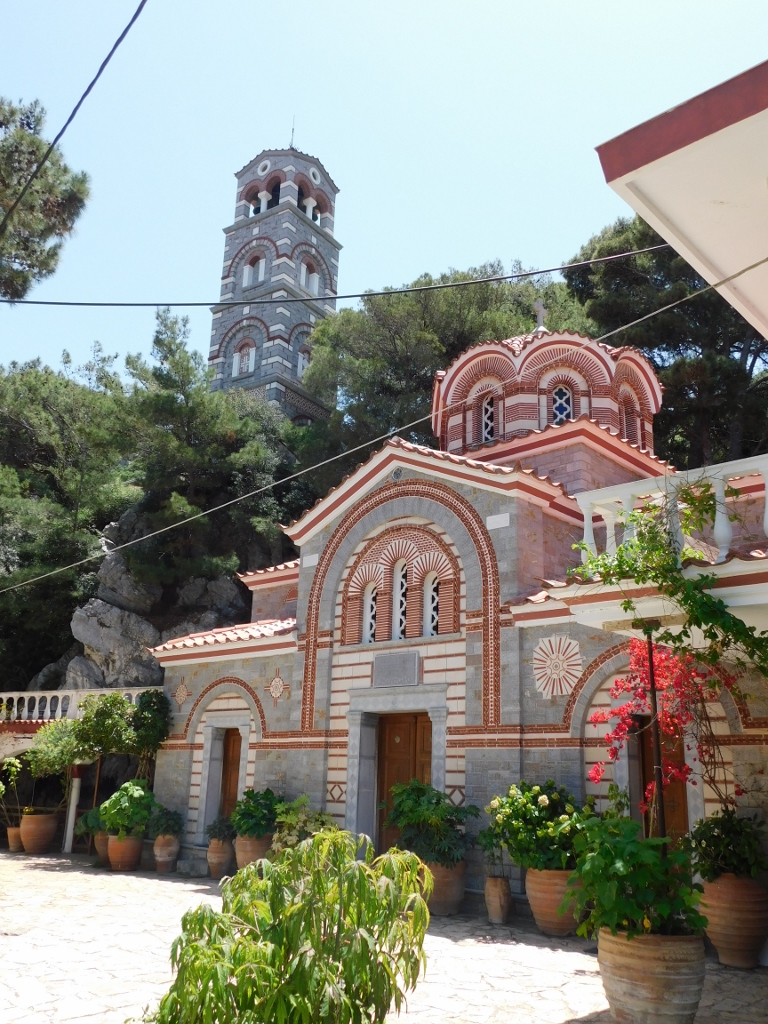 Monastery of St. George Selinari
Monastery of St. George Selinari
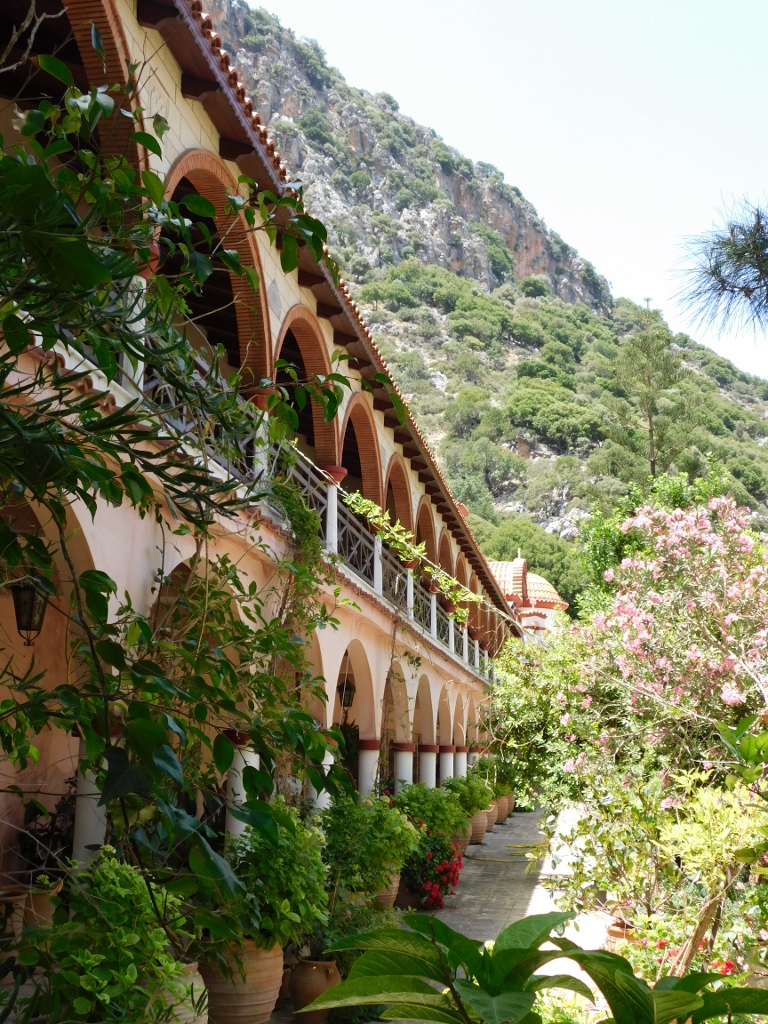 Monastery of St. George Selinari
Monastery of St. George Selinari
Within the monastery there is the Chapel of St. George built by monk Nikolaos, but today it contains modern fresco/wall paintings.
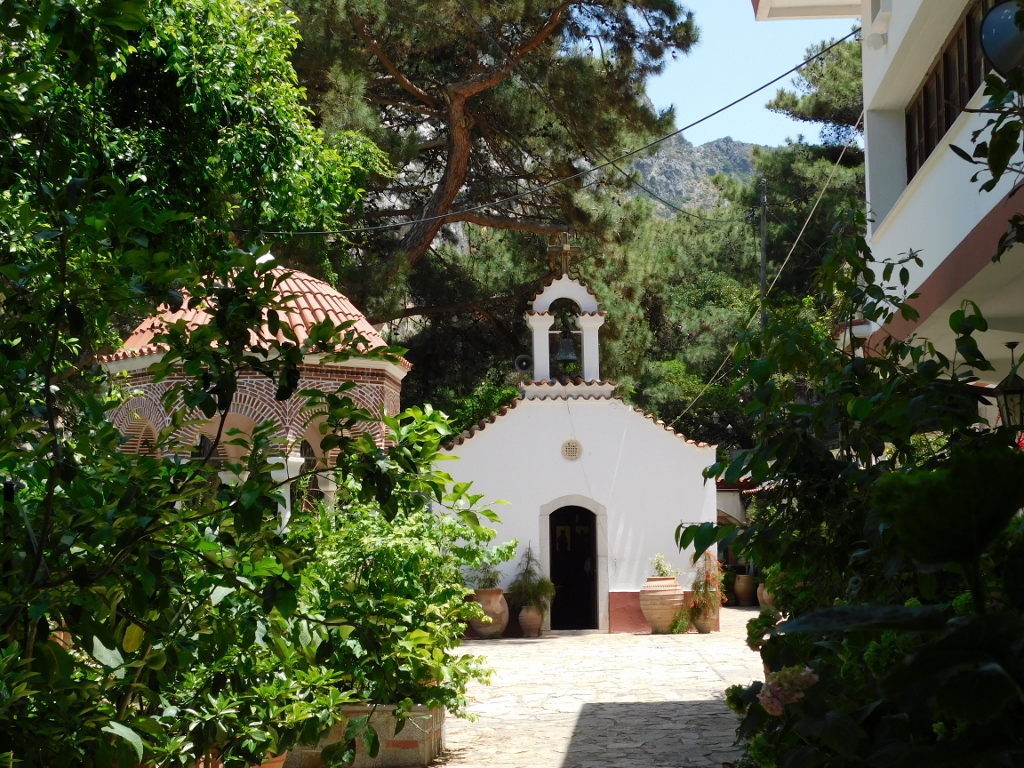 Monastery of St. George Selinari, Chapel of St. George
Monastery of St. George Selinari, Chapel of St. George
Having sauntered a little around the monastery’s yard, I got back into the car again and proceeded towards Malia. I had already booked a hotel room there, but first I went to a place that was the main reason why I wanted to come here at all. This is one of the five major palatial Minoan centres or complexes that used to incorporate a large palace, accompanying structures and a settlement. The remaining four are the palaces in Knossos, Kydonia, Phaistos and Zakros that I had already visited.
When talking about these palaces, it is important to understand that these were in fact palatial centres or building complexes around a palace or in other words – proper cities. On the basis of the findings, it has been ascertained that there were not only premises used by the rulers or the priests, but rather this was the home of a myriad of other people – artisans, merchants, etc. In addition, these cities were also administrative, economic and religious centres of the area in which they were founded.
The palace in Malia was the third largest Minoan palace and it was the seat of Sarpedon, the youngest brother of King Minos who was also a son of god Zeus and Phoenician princess Europa.
The site was discovered in 1915 which was later followed by systematic excavations. The timelines of Malia practically follow the same pattern that can be seen in the other Minoan palaces. It has been established that the first palace was built around 1900 BCE, it was then destroyed in 1700 BCE, while the new one was built at the same place around 1650 BCE. This second palace was definitely destroyed around 1450 BCE, but there was no intensive habitation here later on and this helped archaeologists to a large degree.
Malia is situated in a flat littoral terrain and in a way this makes the visit to the site slightly more challenging, since everything is looked at from the same level. On the other hand, in construction terms, Malia followed the same ground plan as the other palaces – in the middle there was a large, rectangular courtyard surrounded by multi-storey buildings that sometimes had as many as four floors. These structures were used for habitation and receptions, but some of them also served as treasuries, temples, workshops, kitchens, storages, etc.
I approached the remains of Malia from the southwest side and in this section the visitor first comes across eight grain silos that make Malia actually different from the other palaces.
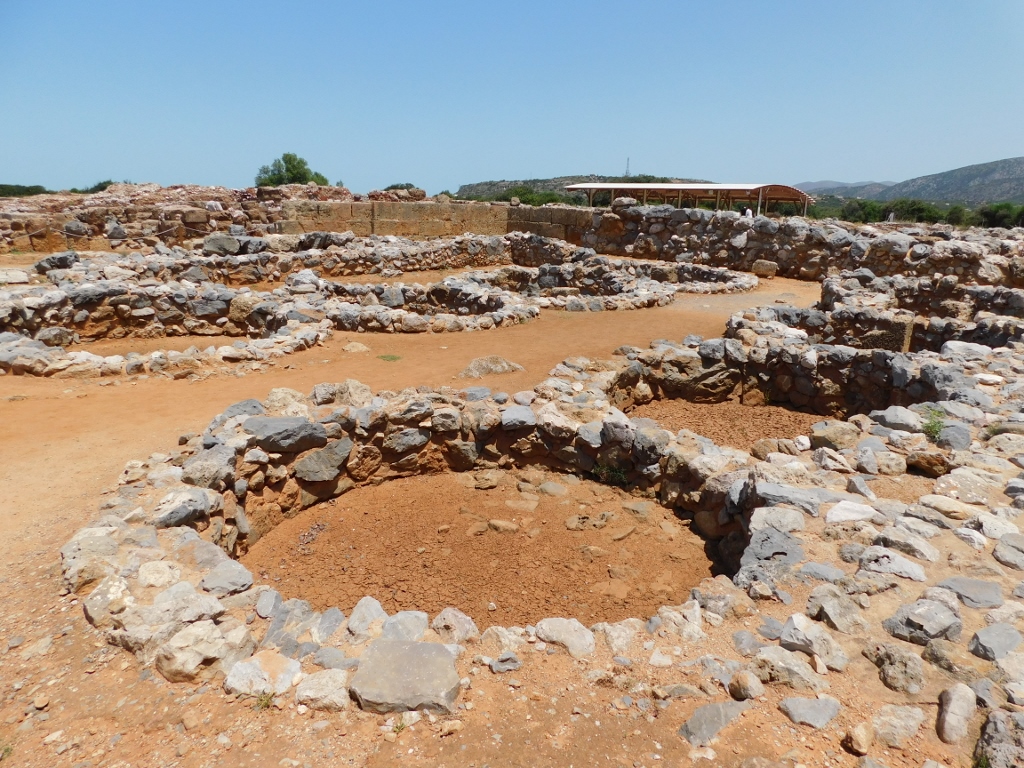 Malia: grain silos
Malia: grain silos
Then I proceeded a couple of dozen metres further and thus I came to the South Entrance leading to the palace.
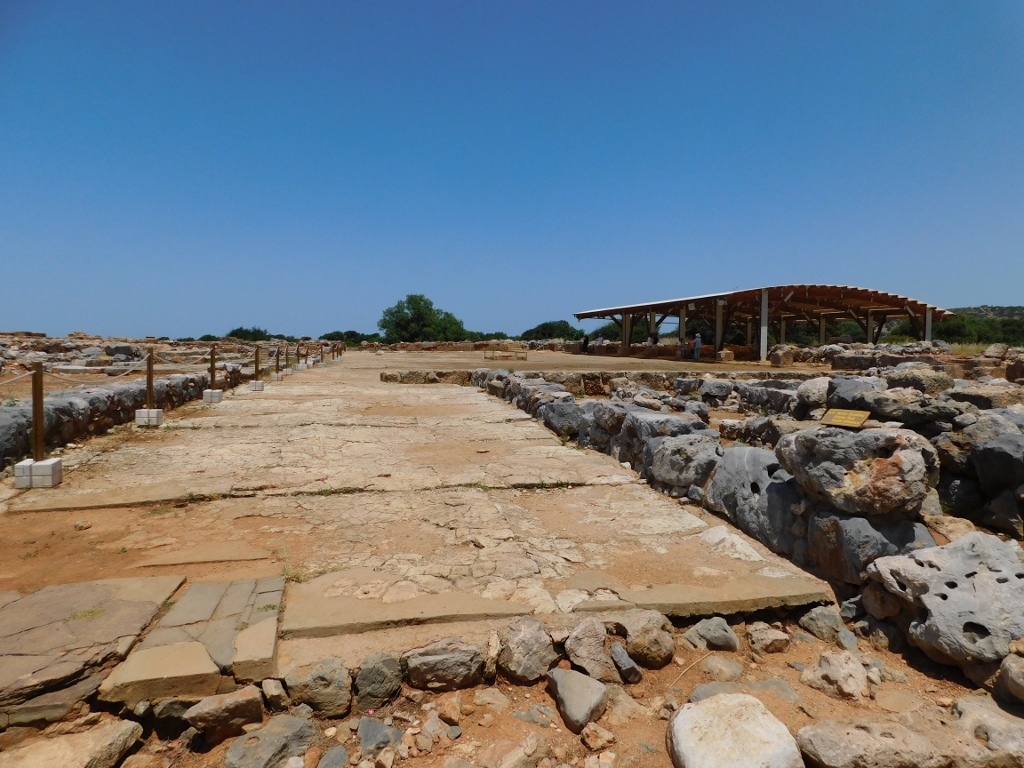 Malia: South Entrance
Malia: South Entrance
As you continue along the paved path leading to the Central Courtyard from the south side, you come across a structure that can be accessed via four wide steps and flanking the staircase there is a smallish plateau made of stone slabs with a circular stone table. It is believed that this table was used for leaving offerings brought by the believers.
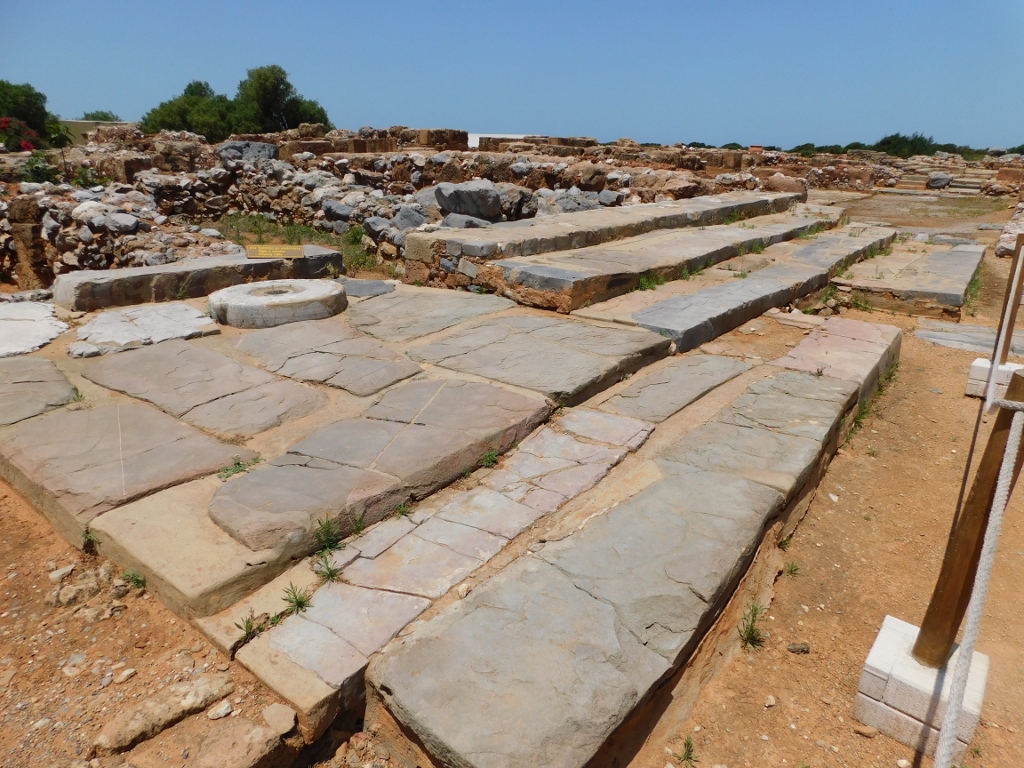 Malia: small stone plateau and monumental staircase near the South Entrance
Malia: small stone plateau and monumental staircase near the South Entrance
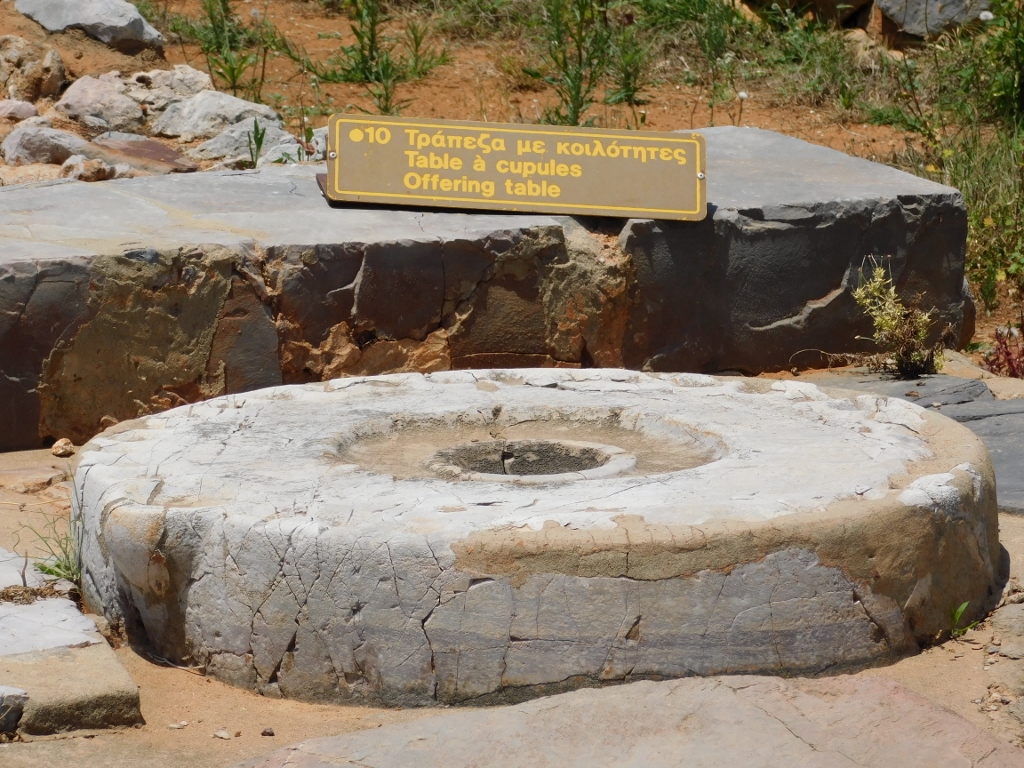 Malia: Offering Table
Malia: Offering Table
Here I entered the area of the Central Courtyard and in the continuation of the building with the stone offering table there are remains of the West Wing that used to constitute the largest and the most important part of the palace. It incorporated rooms used for religious purposes, as well as storage rooms and residential premises. First I came to the Pillar Crypt and then also to the steps leading to the upper floor.
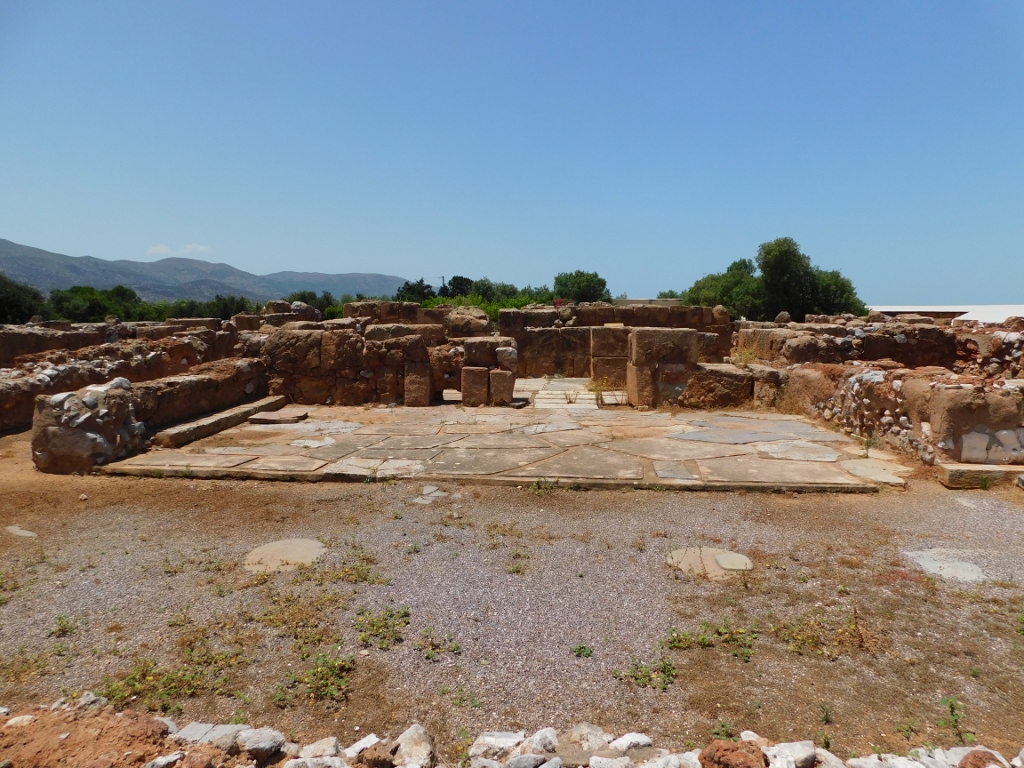 Malia: Pillar Crypt
Malia: Pillar Crypt
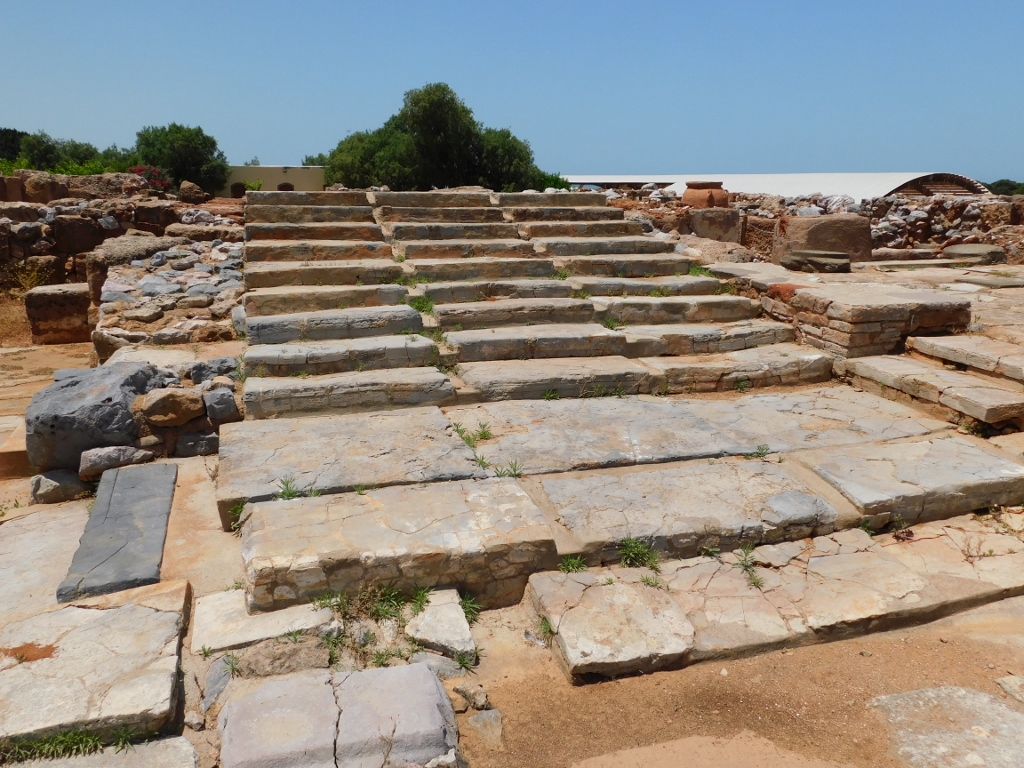 Malia: staircase that led to the upper floor
Malia: staircase that led to the upper floor
The next building within the West Wing is the so-called Loggia that was used as a royal lodge or a throne room.
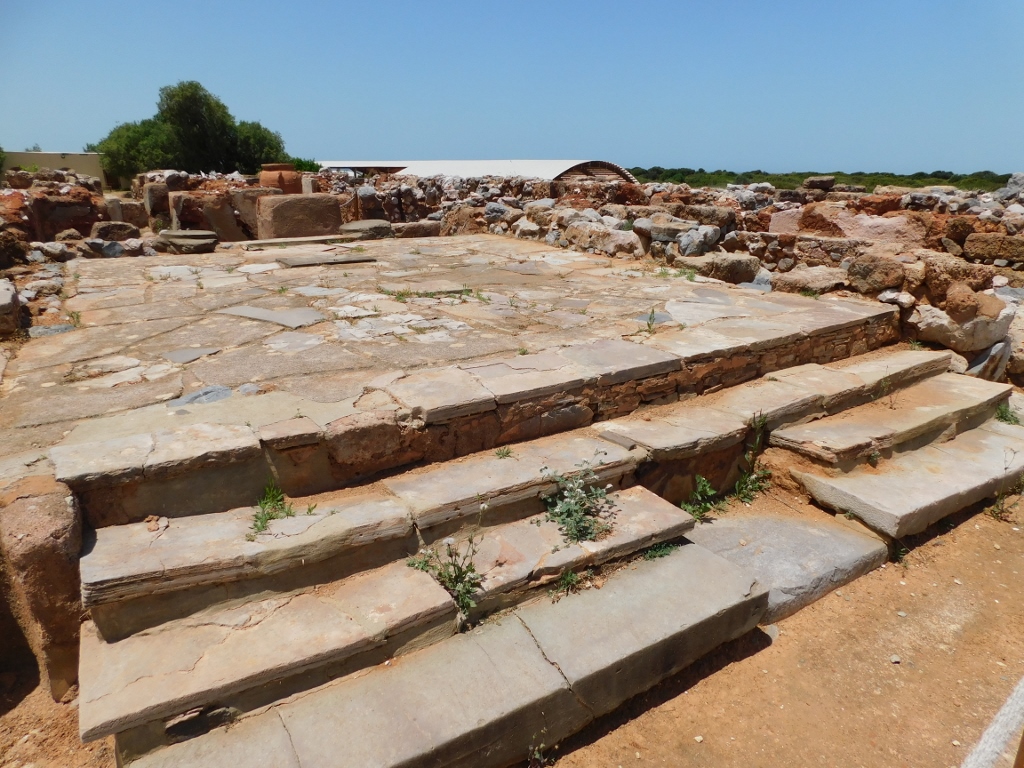 Malia: the Loggia
Malia: the Loggia
Behind these parts entered directly from the Central Courtyard there used to be storage rooms in the back section of the West Wing and this is nowadays emphasised by an impressive pithos that can be seen in that part of the palace.
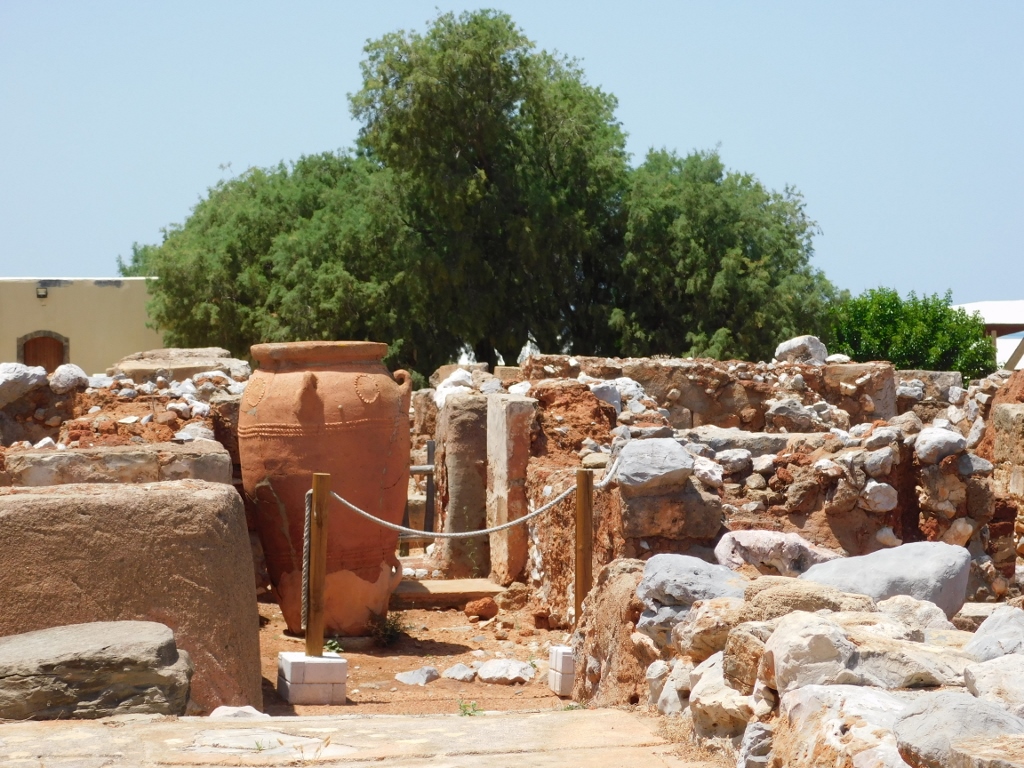 Malia, a detail
Malia, a detail
In the Central Courtyard, near the West Wing, there is also an interesting and unexpected object – a large Byzantine stone cannon ball.
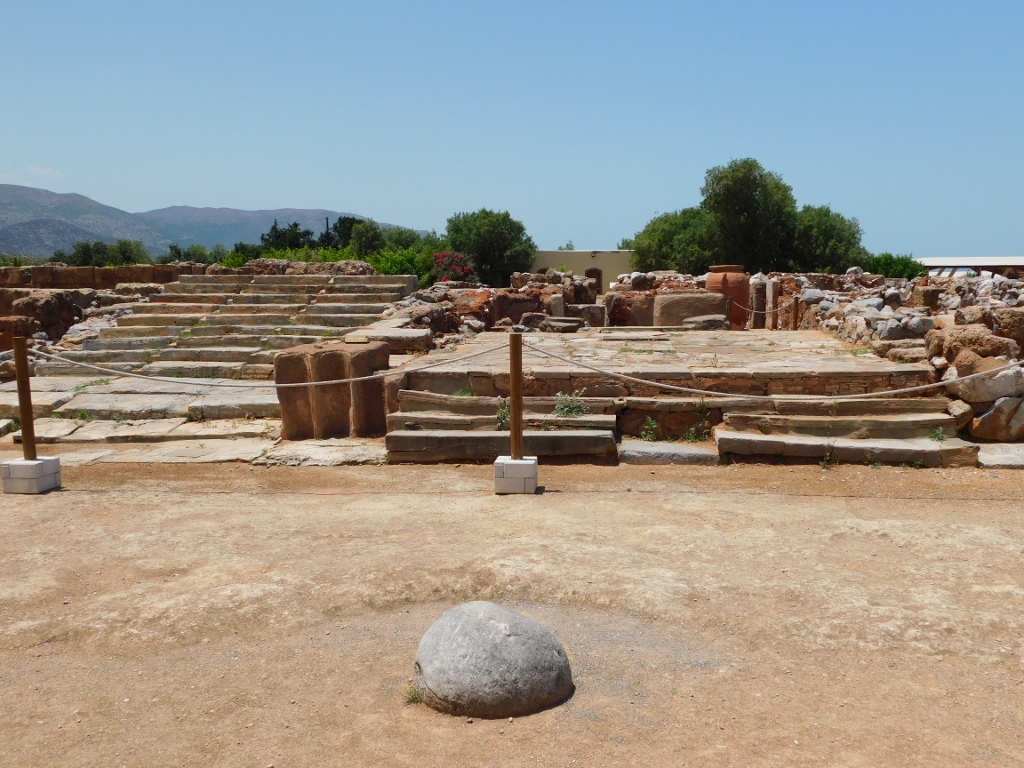 Malia: stone cannon ball in the courtyard in front of the Loggia
Malia: stone cannon ball in the courtyard in front of the Loggia
On the east side of the Central Courtyard there are storerooms for liquids, kitchen, as well as the east entrance. Today, their remains are covered.
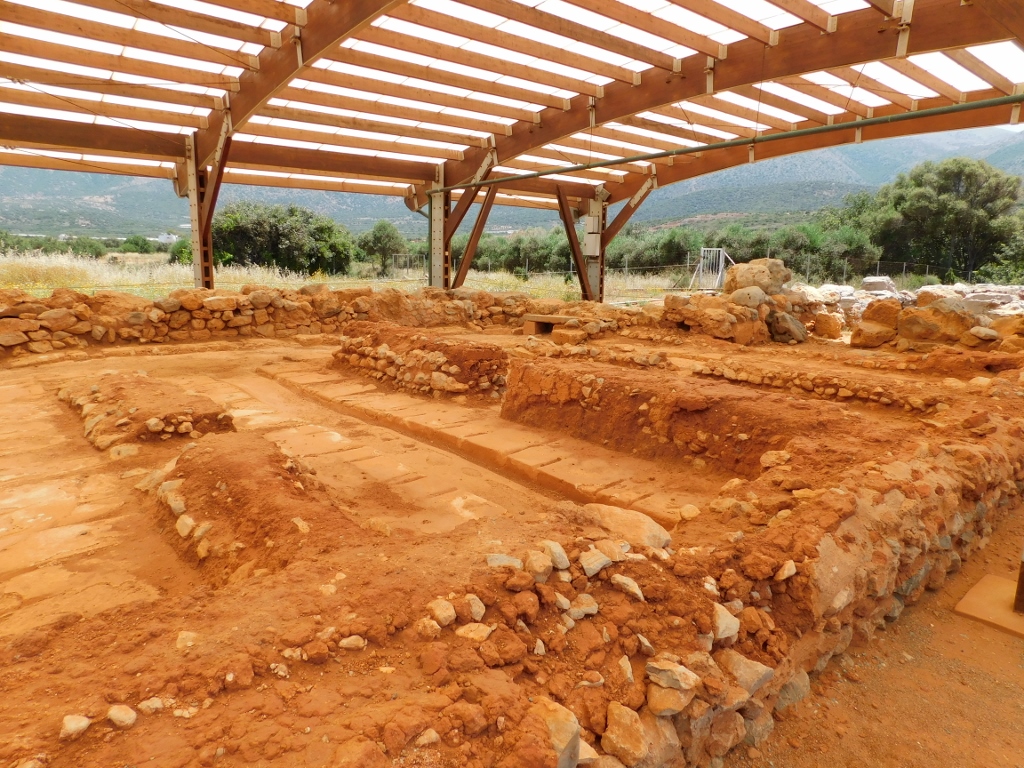 Malia: section east of the Central Courtyard
Malia: section east of the Central Courtyard
It felt very good to go in here for a short while because it provided a pleasant shade, since it was quite hot and the Sun seemed rather relentless out in the open. From here I could also take photos of the Central Courtyard.
 Malia: the Central Courtyard
Malia: the Central Courtyard
North of the Central Courtyard there are remains of the Hypostyle Hall and it is believed that this was used as a banquet room or the formal dining-room.
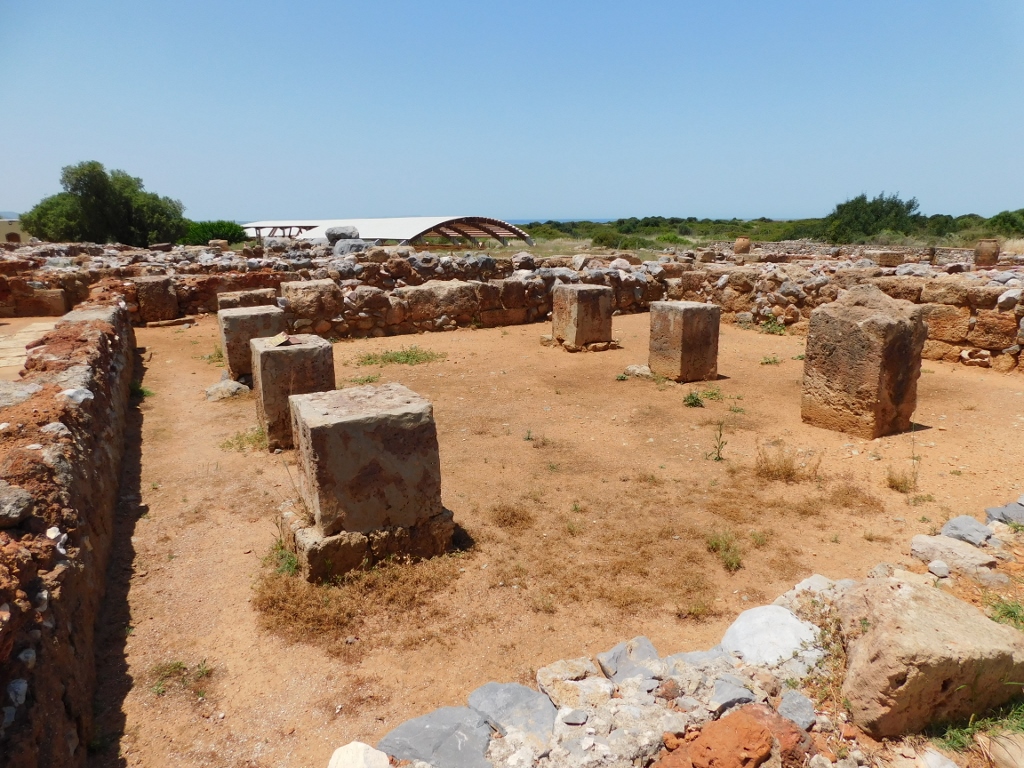 Malia: the Hypostyle Hall
Malia: the Hypostyle Hall
By this point I was entering the north segment of the complex and it contained another interesting structure – the Oblique Building. The following photo that shows the remains of this building does not suggest anything unusual, but when you look at the ground plan of the site, you can see that all the buildings were made in such a way that the lines of their walls cut one another at a right angle. All, but this one. This is the only building the walls of which deviate from this layout.
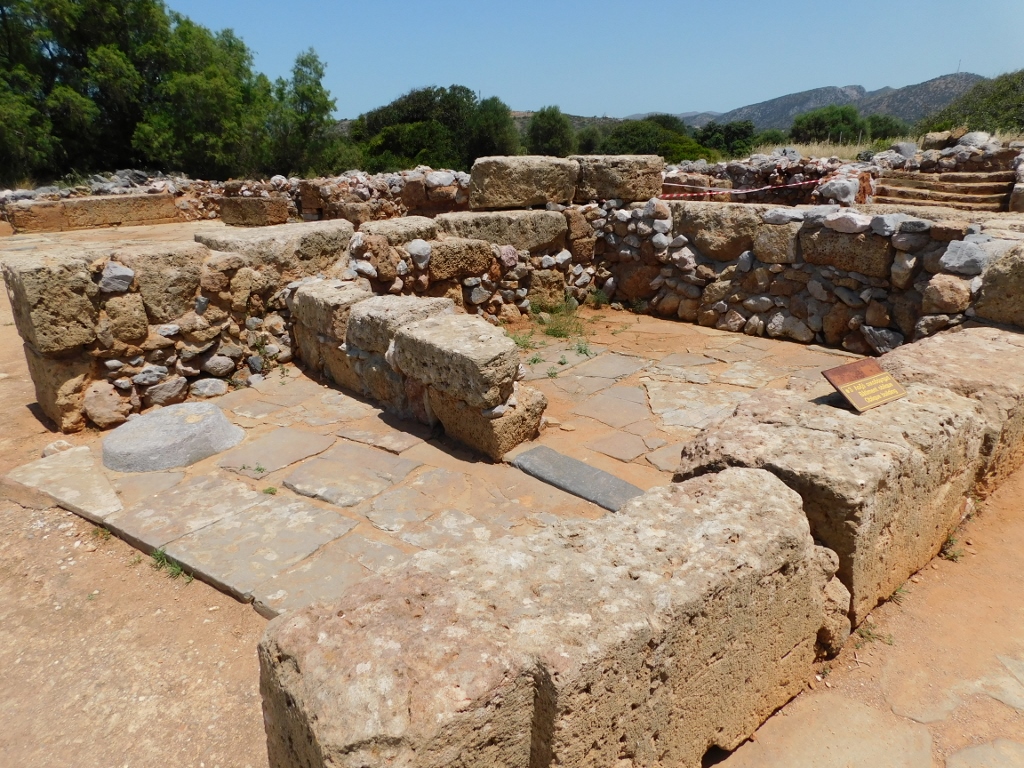 Malia: the Oblique Building
Malia: the Oblique Building
There is also the North Courtyard and slowly I reached the North Entrance as well. Nowadays, there are mostly amorphous remains of the walls of various buildings, but there are also some details that stand out, such as the huge pithoi, remains of the water drainage system and the Minoan paved road, etc.
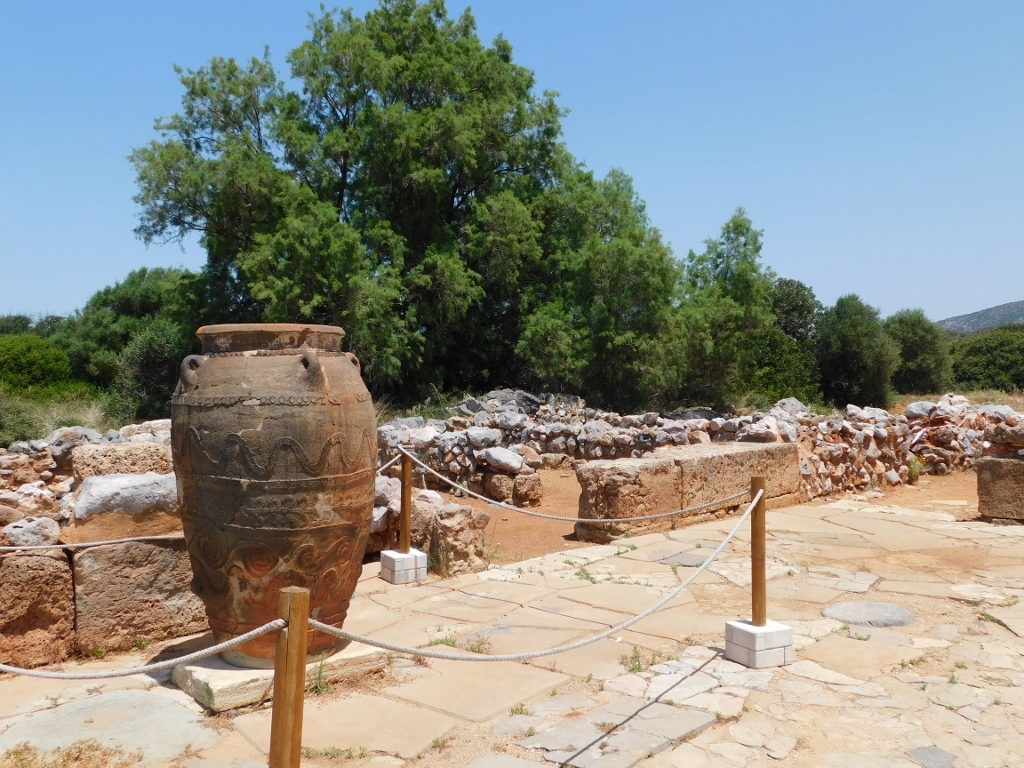 Malia, a detail
Malia, a detail
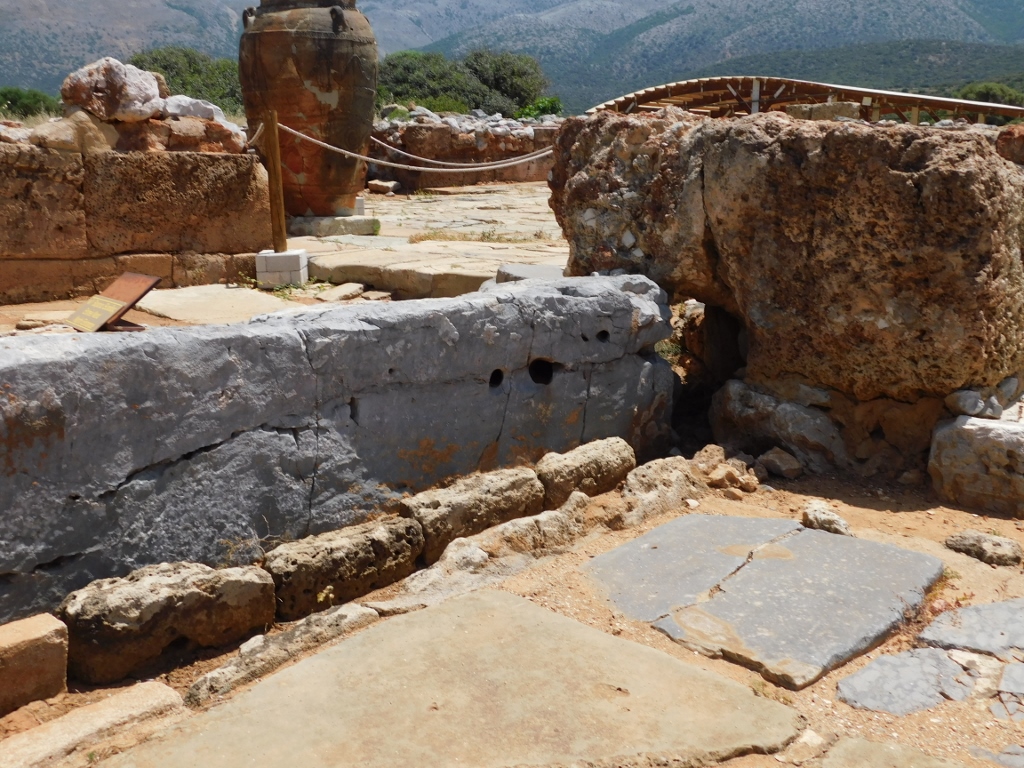 Malia, a detail
Malia, a detail
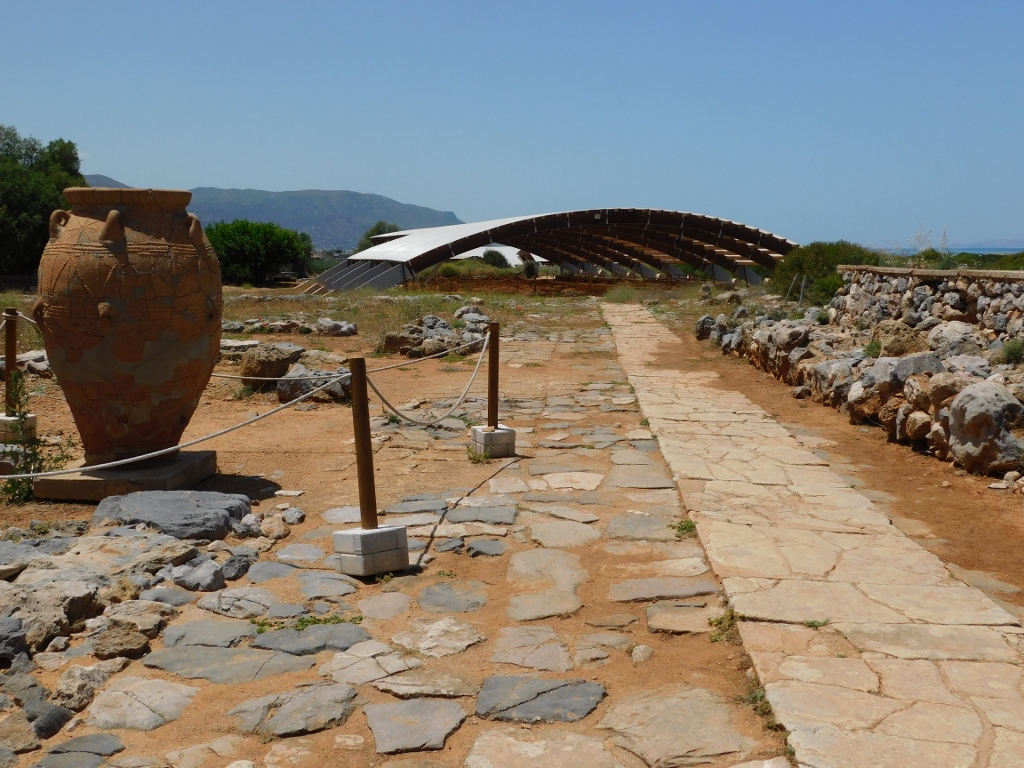 Malia, a detail
Malia, a detail
Following this Minoan paved road I moved on now to the covered section called “Agora,” which was actually an error of the early researchers, but the name has stuck. I stayed on the path and so I visited this section, too.
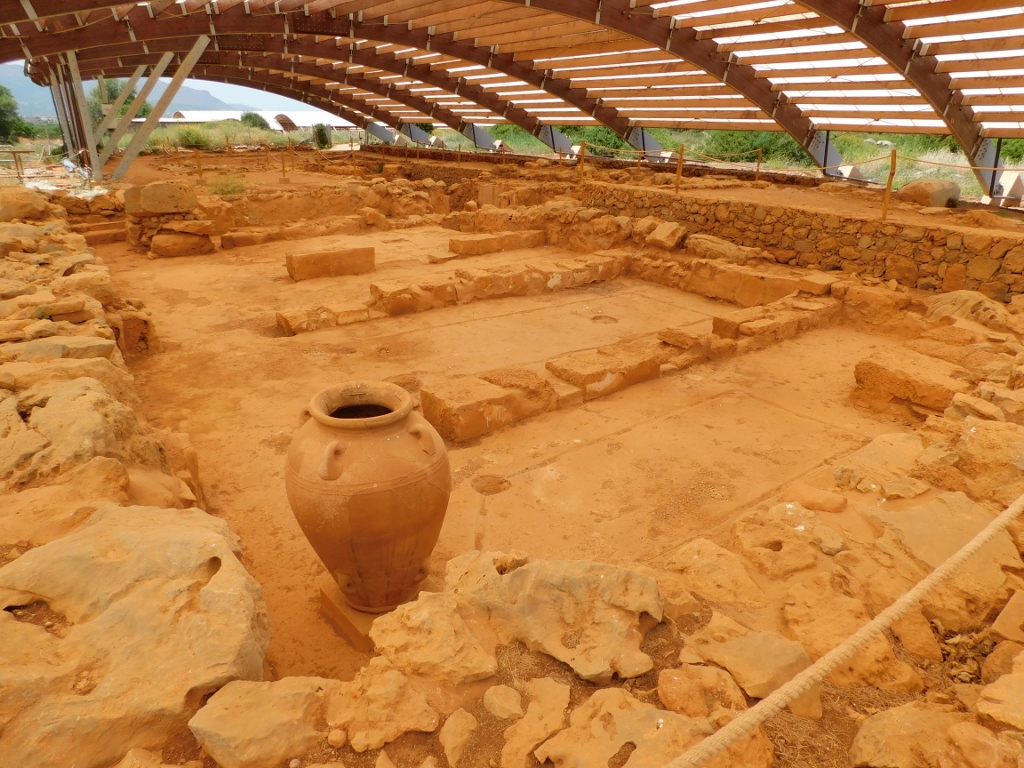 Malia: Agora
Malia: Agora
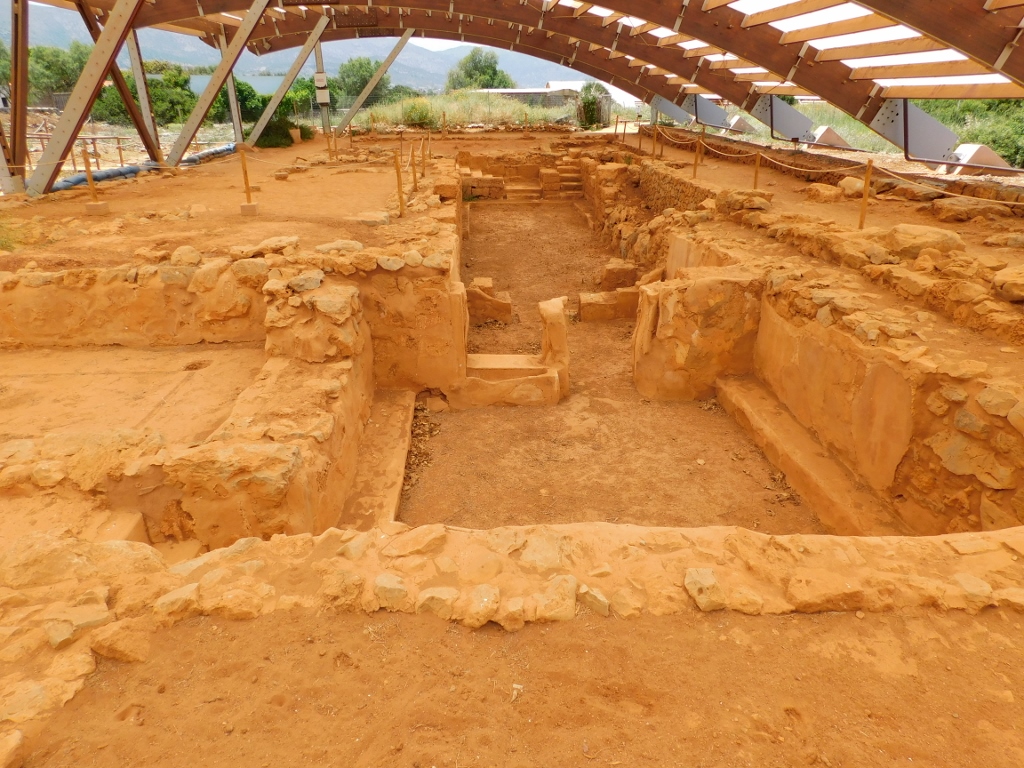 Malia: Agora
Malia: Agora
And then I went to another covered area that is located northwest of the palace. That area is called Quartier or District Mu and it belongs to the Old Palace Period (1800-1700 BCE). This is also the best preserved complex from this period in all of Crete. It encompasses two larger buildings and seven smaller ones, and each one of them has multiple rooms, especially building A that covers the area of 840 sq. m.
I approached this section from the east side and there the visitor first comes across structures that were used as workshops for making pottery and metal objects, as well as for the production of stone seals and later the visitor path also leads to other structures.
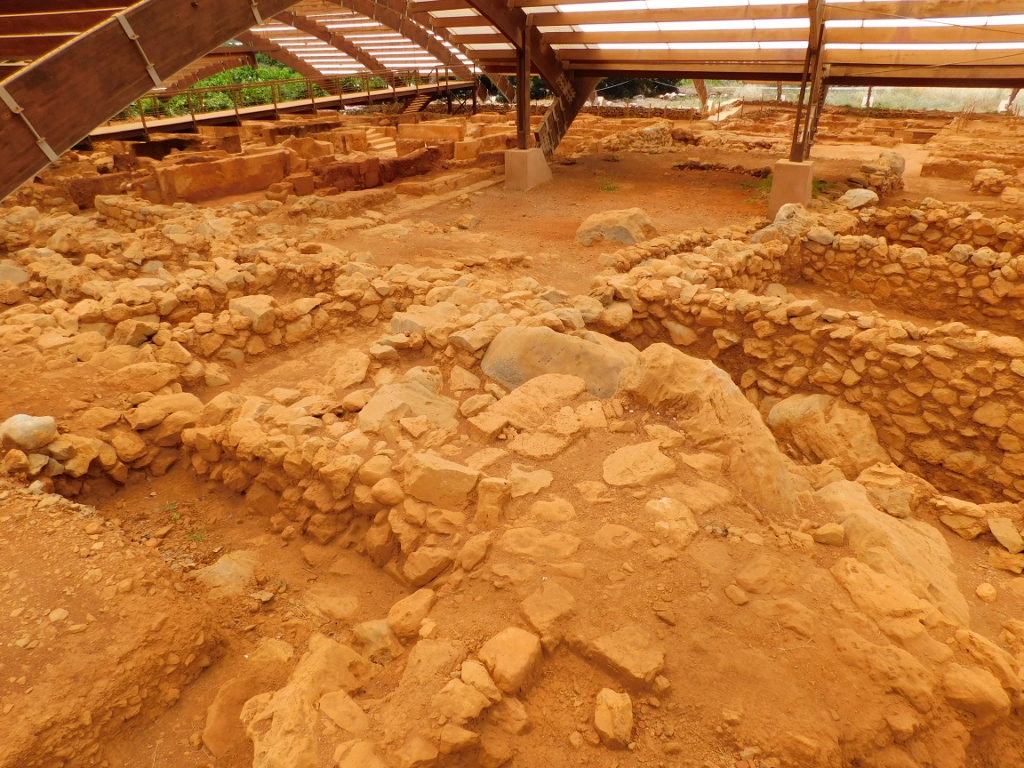 Malia: Quartier Mu
Malia: Quartier Mu
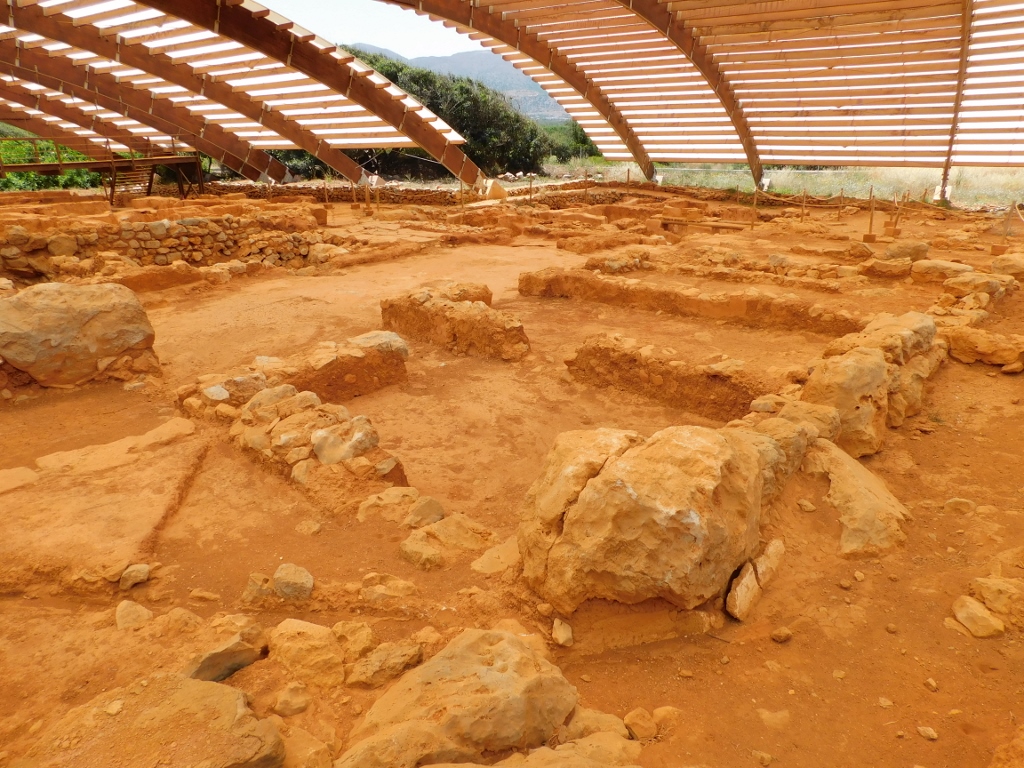 Malia: Quartier Mu
Malia: Quartier Mu
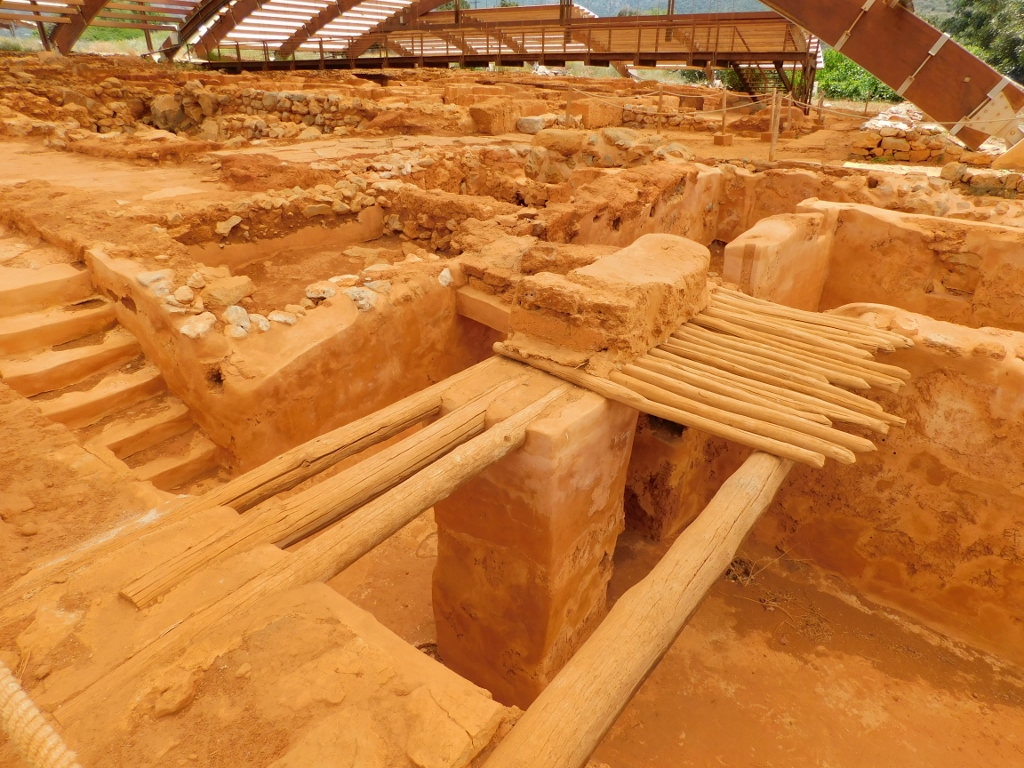 Malia: Quartier Mu
Malia: Quartier Mu
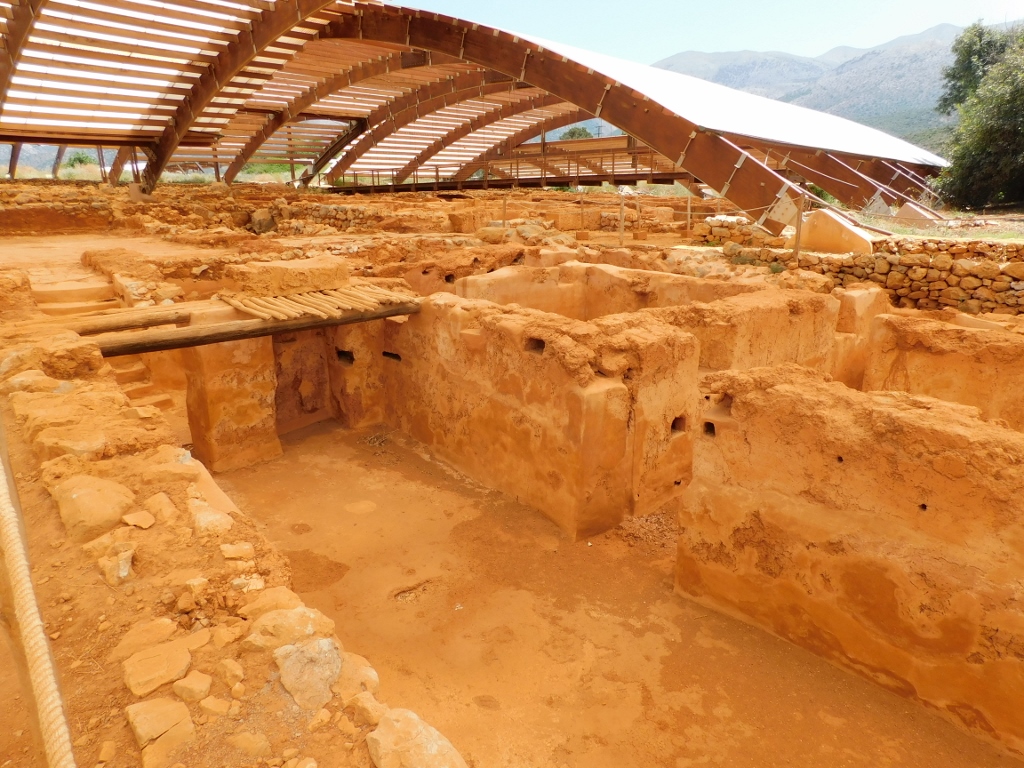 Malia: Quartier Mu
Malia: Quartier Mu
Because of the size of the buildings and the established functions of some of the rooms, such as the residential rooms, rooms for religious activities, storerooms, etc., these buildings can easily be compared to the palace itself. The archaeological finds suggest that this was the site of an administrative centre that functioned in parallel to the palace and played its important social and political role.
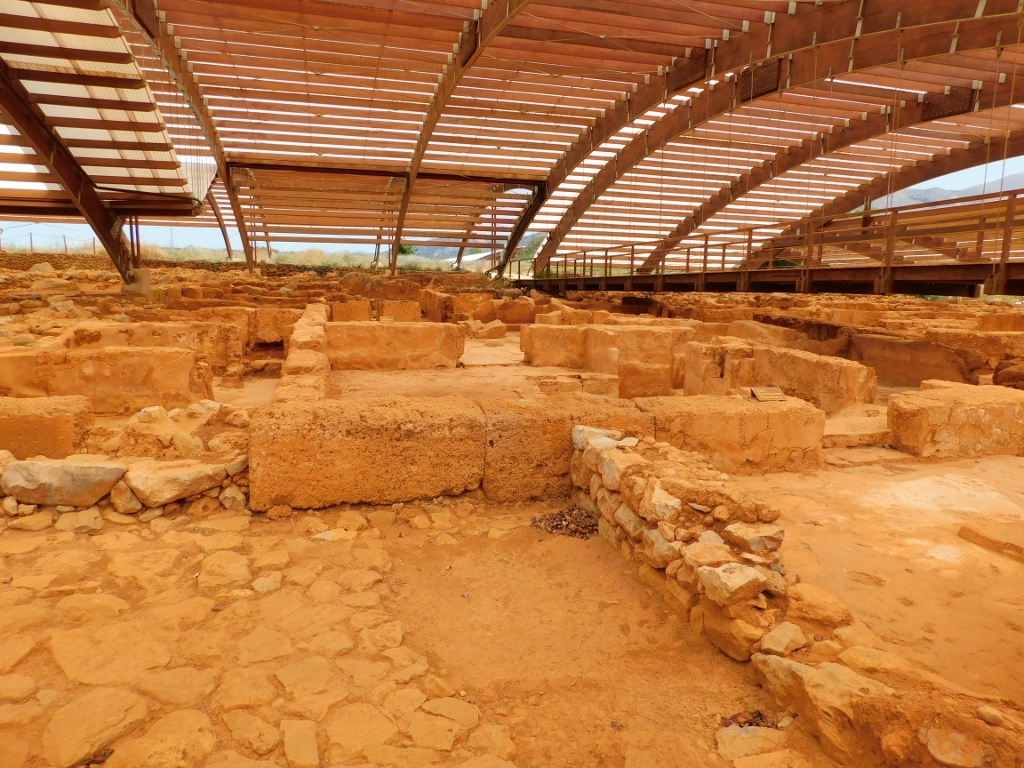 Malia: Quartier Mu
Malia: Quartier Mu
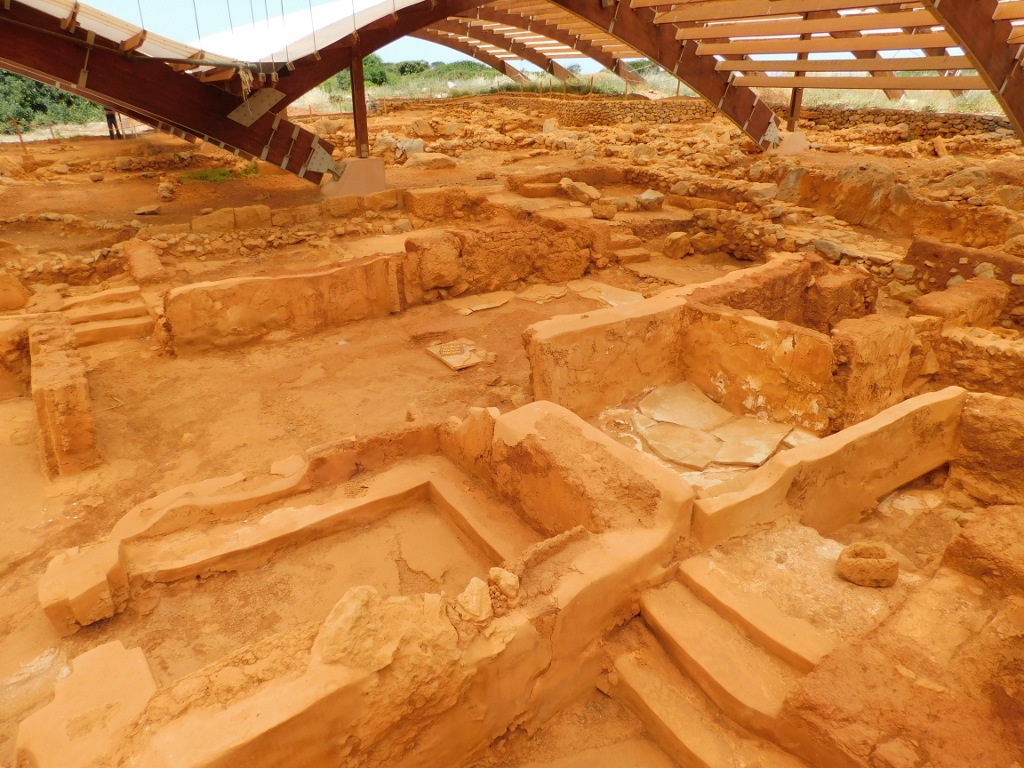 Malia: Quartier Mu
Malia: Quartier Mu
Here I practically finished with my sightseeing of the archaeological site of Malia. Going towards the exit, I came across a tiny elevation, if I can even call it that, but it sufficed to allow me to make a better photo of the site with the view towards the Palace from the west side.
 Malia: West view at the Palace
Malia: West view at the Palace
By the way, some 600 m north of the archaeological site of Malia with the Minoan palace, close to the shore, there are also remains of a graveyard from the Minoan period. It was right here that the famous gold “Bee Pendant” made in the period 1800-1700 BCE was found. The pendant can be seen at the Heraklion Archaeological Museum and its photo in part 5 of my stories about the journey around Crete (https://www.svudapodji.com/en/crete-5/).
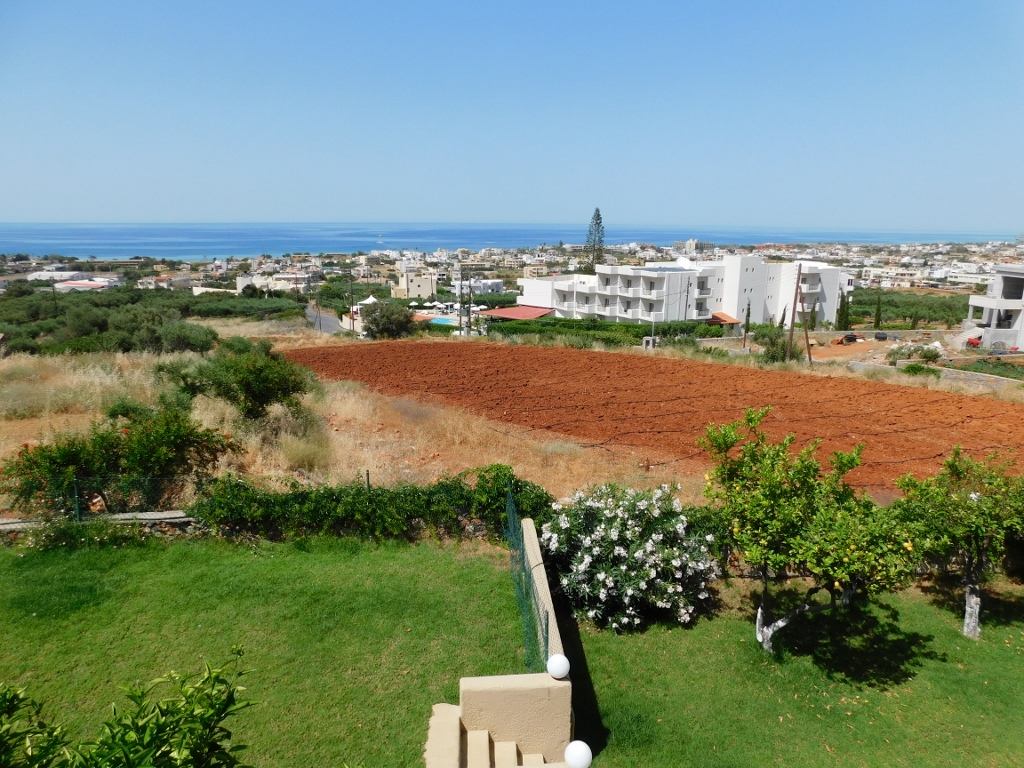 View at the town of Malia
View at the town of Malia